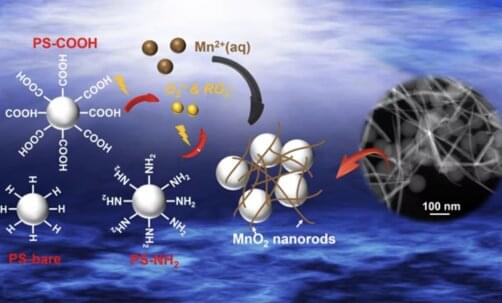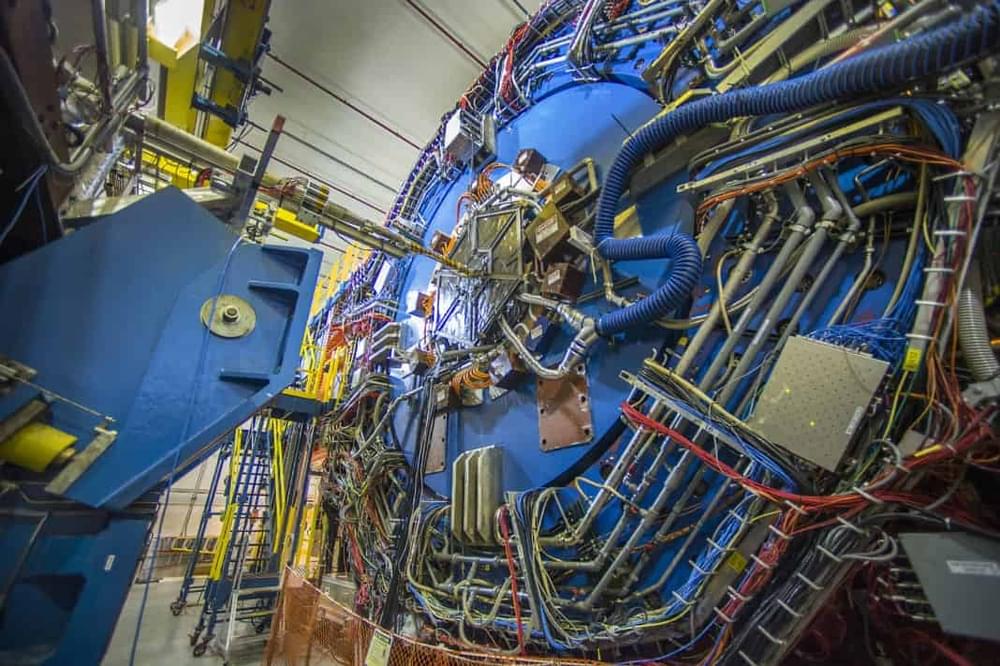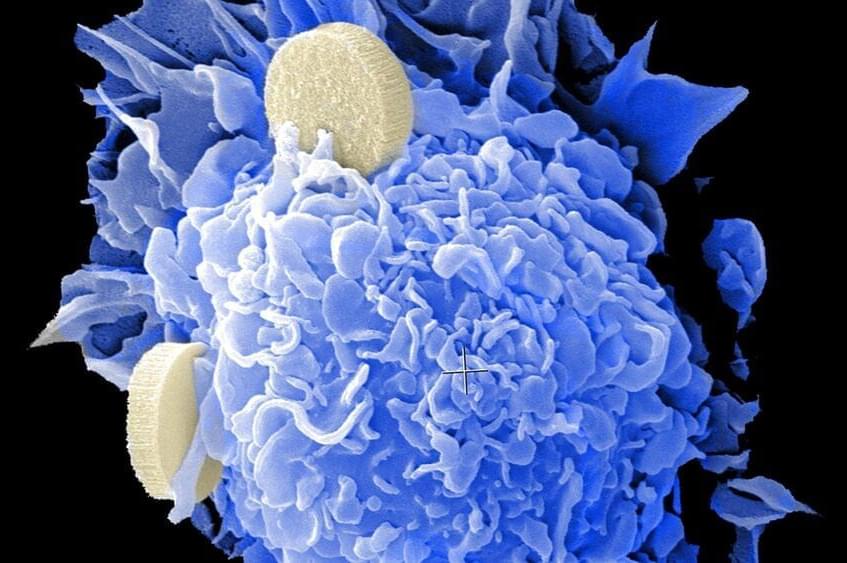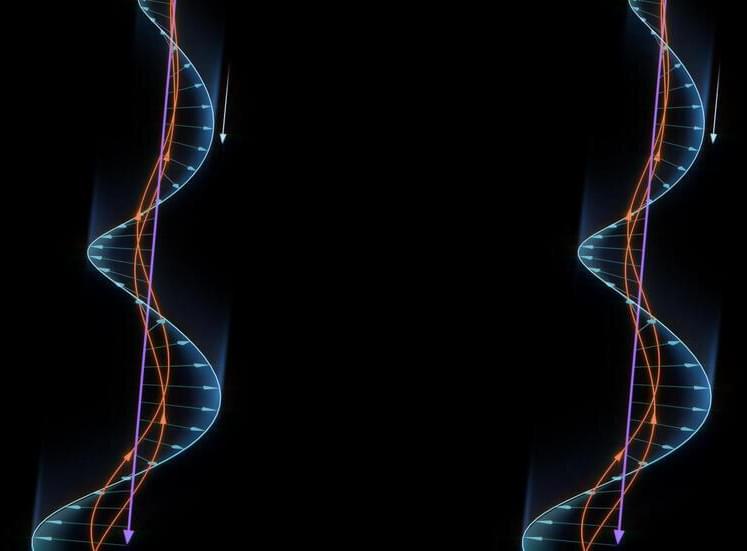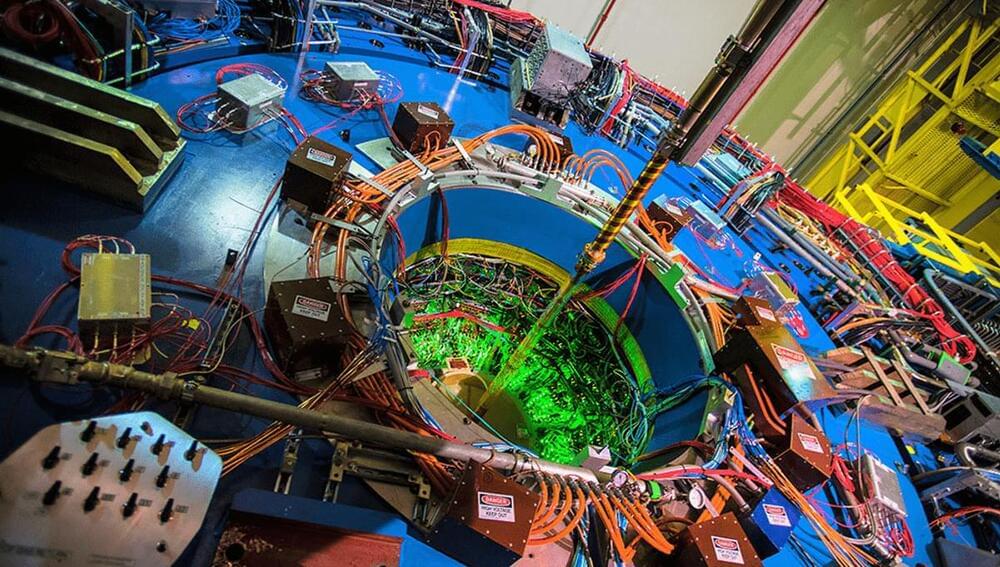Jan 11, 2023
Explaining Anomalies in Reactor Antineutrinos
Posted by Saúl Morales Rodriguéz in categories: nuclear energy, particle physics
Several experiments have been set up outside nuclear reactors to record escaping antineutrinos. The data generally agrees with theory, but at certain energies, the antineutrino flux is 6–10% above or below predictions. These so-called reactor antineutrino anomalies have excited the neutrino community, as they could be signatures of a hypothetical sterile neutrino (see Viewpoint: Getting to the Bottom of an Antineutrino Anomaly). But a new analysis by Alain Letourneau from the French Atomic Energy Commission (CEA-Saclay) and colleagues has shown that the discrepancies may come from experimental biases in associated electron measurements [1].
The source of reactor antineutrinos is beta decay, which occurs in a wide variety of nuclei (more than 800 species in a typical fission reactor). To predict the antineutrino flux, researchers have typically used previously recorded data on electrons, which are also produced in the same beta decays. This traditional method takes the observed electron spectra from nuclei, such as uranium-235 and plutonium-239, and converts them into predicted antineutrino spectra. But Letourneau and colleagues have found reason to doubt the electron measurements.
The team calculated antineutrino spectra—as well as the corresponding electron spectra—using a fundamental theory of beta decay. This method works for some nuclei, but not all, so the researchers plugged the gaps using a phenomenological model. They were able to treat all 800-plus reactor beta decays, finding “bumps” in the antineutrino flux that agree with observations. Similar features are predicted for electron spectra, but they don’t show up in the data. The results suggest that an experimental bias in electron observations causes the reactor antineutrino anomalies. To confirm this hypothesis, the researchers call for new precision measurements of the fission electrons.
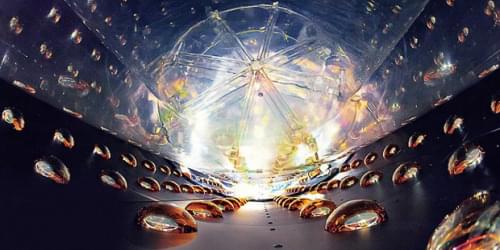
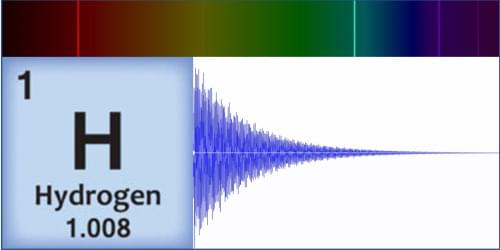

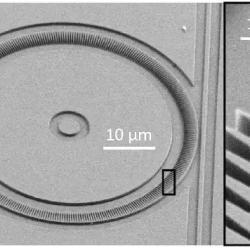 Taming rays of light and bending them to your will is tricky business. Light travels fast and getting a good chunk of it to stay in one place for a long time requires a lot of skillful coaxing. But the benefits of learning how to hold a moonbeam (or, more likely, a laser beam) in your hand, or on a convenient chip, are enormous. Trapping and controlling light on a chip can enable better lasers, sensors that help self-driving cars “see,” the creation of quantum-entangled pairs of photons that can be used for secure communication, and fundamental studies of the basic interactions between light and atoms—just to name a few.
Taming rays of light and bending them to your will is tricky business. Light travels fast and getting a good chunk of it to stay in one place for a long time requires a lot of skillful coaxing. But the benefits of learning how to hold a moonbeam (or, more likely, a laser beam) in your hand, or on a convenient chip, are enormous. Trapping and controlling light on a chip can enable better lasers, sensors that help self-driving cars “see,” the creation of quantum-entangled pairs of photons that can be used for secure communication, and fundamental studies of the basic interactions between light and atoms—just to name a few.